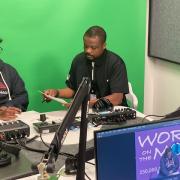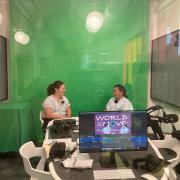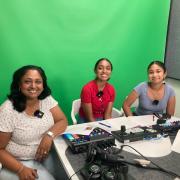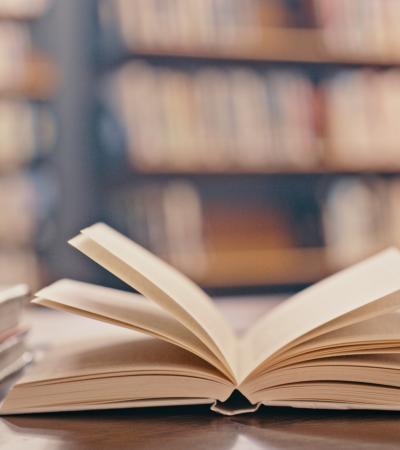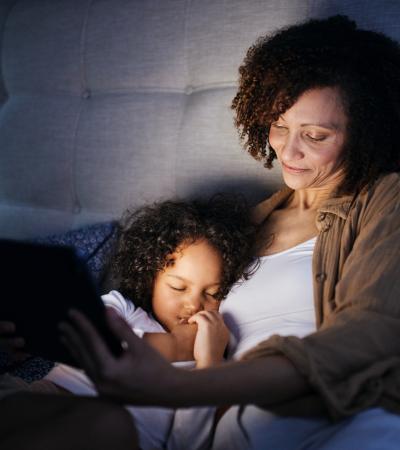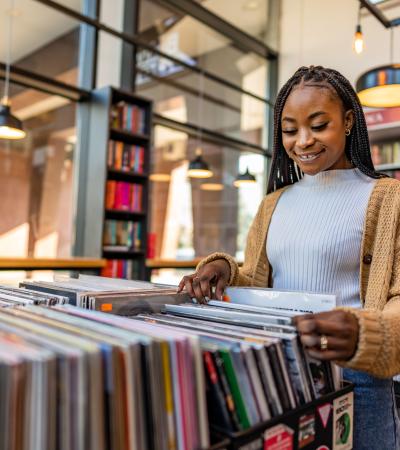Moving People: Connected Stories was a podcast program created in conjunction with the World on the Move: 250,000 Years of Human Migration exhibit to amplify the real voices of migrants from all walks of life. Guests were invited to share their personal migration experiences—the struggles, triumphs and the moments that shaped them.
World on the Move was made possible through a partnership between the American Anthropological Association (AAA) and the American Library Association (ALA) Public Programs Office.
Advanced Planning
The goal of Moving People: Connected Stories was to showcase the diversity of Houston, one of the most multicultural cities in the country, by collecting and preserving the voices and stories. The program planning began six months before the recording date and was a collaboration between branch staff, TechLink team members and the library’s communications department.
TechLink is the technology wing of the Houston Public Library. Key steps in the program included consulting with resident library archivists, who provided guidance on media release forms and time limits for the interviews and suggested including videos in the podcast to capture nuances that might be missed in an audio-only recording.
Staff researched similar programs and created a conversation guide with prompts to help structure interviews. The podcast studio was reserved for the program, and 30-minute appointments were scheduled for the recording sessions.
The library also purchased flash drives for participants to take home their recordings if they so desired. As this was to be an intergenerational conversation, teen volunteers were recruited and encouraged from the families that signed up to serve as interview hosts.
Marketing
Promotion for the program ran through the library’s website, social media platforms, newsletters and outreach emails to partner organizations, teen councils and community groups.
While this was an intergenerational program, the library wanted to invite teens to host the conversations in a special way.
The exhibit and program together drew strong community interest and engagement and served as an intentional way for patrons and families to sit down and share stories.
Budgeting
Program expenses were minimal. The primary costs were flash drives and small thank-you gifts for participants. All other resources—including staff time, studio equipment and printing—were provided in-house.
Using in-house library technology and expertise helped keep costs low while maintaining a high-quality program experience.
Day-of-event Activity
The main recording day was held on a Saturday, with both registered participants and patrons who were walk-ins.
Two staff members facilitated the event. The lead staff member greeted guests, provided orientation, guided patrons through the conversation prompts and collected completed media release forms.
A TechLink staff member managed the recording booth, assisted with technical setup and downloaded completed interviews to flash drives.
After all recordings were completed, they were shared with the library’s communications team for review and uploaded to the library’s YouTube channel.
Program Execution
Most interviews took place during the scheduled Saturday session, with follow-up appointments offered throughout the month-long World On The Move exhibit.
Allowing participants to record in their preferred languages helped eliminate language barriers and encouraged inclusive and authentic storytelling.
Patrons who participated expressed gratitude for the opportunity to document their experiences, and many inquired about future storytelling or oral history initiatives. The interest in such story-sharing programs has led the library to plan more such podcast programs.
Advice
While the program was largely in-house, reserving the podcast studio, understanding the equipment and putting together program elements like the conversation prompts and the media release forms required advance preparation.
Participants deeply appreciated the intentional space to reflect on their migration journeys. Some patrons who watched the conversations requested having the recordings transcribed or translated, something to consider for future programs.
Engaging teens as interviewers proved rewarding but required flexibility in scheduling. Providing structured conversation prompts helped reduce awkwardness and encouraged meaningful dialogue.
Overall, the program received positive feedback, and several guests expressed interest in partnering on future storytelling initiatives.

